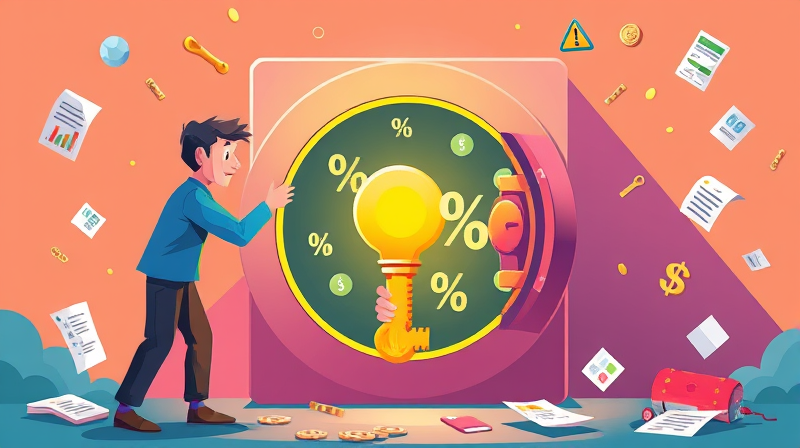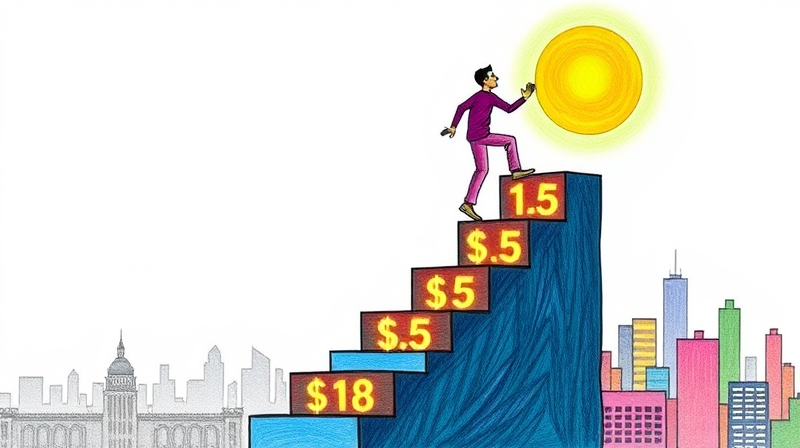Securing a personal loan with an interest rate that works in your favor can feel like navigating a maze. Yet with the right knowledge and approach, you can position yourself to receive standout offers that save you hundreds or even thousands in interest payments over the life of your loan.
Understanding market dynamics, lender criteria, and proactive strategies empowers you to move forward with confidence. Let this guide illuminate the path to truly competitive borrowing.
Current Market Snapshot
As of May 2025, the personal loan landscape is dynamic and competitive. Borrowers with pristine credit profiles can access some of the best personal loan rates for borrowers starting as low as 6.49%, while the market average across all credit tiers sits at 12.43%.
Online lenders like Reach Financial lead the pack with rates beginning at 5.99%, followed closely by LightStream at 6.49% and American Express at 6.90%. Traditional banks such as Wells Fargo start at 6.99%, and credit unions continue to offer attractive rates, with an average APR of 10.80% on three-year loans.
Rate variability can be significant: the average low APR is 11.31%, while the average high APR peaks at 30.20%. Some specialty lenders may charge rates nearing 100% for high-risk applicants. Understanding where you fall on this spectrum is the first step toward improving your offer.
Interest rates today reflect broader economic trends. With central banks adjusting policy in response to inflation and growth metrics, borrowers may see subtle shifts in the personal loan market in May 2025 from month to month. Staying informed on Federal Reserve announcements can provide a valuable edge when timing your application.
Factors That Influence Your Interest Rate
Interest rates are not arbitrary; lenders assess a range of borrower attributes to determine the risk of extending credit. Recognizing these factors can help you focus on areas that yield the greatest impact.
- Credit score impact: Excellent credit typically results in the lowest rates, while poor scores can push APRs above 30%.
- Income and employment stability: Higher, steady income demonstrates repayment capacity.
- Debt-to-income ratio (DTI): A lower DTI signals balanced finances and reduces lender risk.
- Loan amount and term length: Larger loans may carry slightly higher rates, while shorter terms often come with tighter repayment schedules.
By focusing on each of these elements, you enhance your overall profile and qualify for the most competitive offers available.
Long-term improvements in your credit profile often require patience and discipline. By setting incremental goals—such as reducing credit utilization by five percent each quarter—you can gradually unlock excellent credit typically results in the lowest rates that lenders reserve for their most reliable customers.
Top Lenders Offering Competitive Rates
Choosing the right lender can make a substantial difference in the rate you receive. Online platforms and established financial institutions vie for your business by offering streamlined applications and enticing APRs.
This table highlights a snapshot of options for borrowers who meet the criteria for the lowest tiers. Be sure to explore multiple institutions to compare not only APR but any applicable fees or funding timelines.
Online lenders typically excel in speed and digital convenience, while traditional banks and credit unions may offer personalized support and branch access. Weigh these factors—customer service quality, funding timelines, and ease of account management—alongside APR to choose the lender that aligns with your preferences.
Strategies to Qualify for the Lowest Rates
Preparation is key when targeting single-digit APRs. Lenders reward responsible financial behavior, so take steps well before you submit your application.
- Reduce credit card balances before applying to lower your utilization rate.
- Pay bills consistently and on time to demonstrate reliability.
- Prequalification options to avoid hard credit checks and compare offers risk-free.
- Gather necessary documentation in advance, such as paystubs, tax records, and identification.
Each of these actions strengthens your application and can translate directly into a lower APR or better loan terms.
Begin your preparations at least two to three months before you plan to borrow. This timeline allows you to address any credit report errors, pay down revolving balances, and observe incremental improvements in your credit score, making your application stronger when you submit.
Choosing the Right Type of Loan for Your Needs
Personal loans are not one-size-fits-all. Reflecting on your primary goal helps you match the right product to your financial objectives. Common categories include:
- Debt consolidation to streamline multiple balances into a single payment.
- Home improvements or renovations that add value to your property.
- Major life events such as weddings or medical procedures.
- Other expenses like vehicle purchases or emergency costs.
Specialized lenders may tailor their products to specific uses, offering perks such as reduced fees for debt consolidation or flexible repayment for medical financing. Understanding your intent ensures you select a loan that aligns with both your budget and timeline.
Secured personal loans, backed by collateral such as a savings account or certificate of deposit, can further reduce your interest rate. However, weigh the risks carefully: default could lead to loss of your pledged assets. Unsecured loans carry no collateral requirement but may command higher APRs.
Key Considerations Before You Apply
Beyond APR, borrowers should scrutinize the full loan package to avoid surprises. Examine the following components closely:
Origination fees and servicing charges can add hundreds to your upfront costs. Ensure you know what percentage of the loan amount will be deducted.
Loan term and payment schedule impact the total interest paid and monthly cash flow. A shorter term often means higher payments but lower total interest, while a longer term lowers monthly outlay at the expense of greater cumulative interest.
Funding speed matters when you need cash quickly. Many online lenders fund approved loans within 1–2 business days, and some even offer same-day payouts.
Finally, define what constitutes a “good” rate for your circumstances. While single-digit interest rates are considered good, anything below the current market average of 12.43% is typically viewed favorably. Borrowers with exceptional credit profiles may even target sub-7% APR offers.
Before you sign, read the fine print on origination fees, late payment penalties, and any prepayment penalties. Some lenders offer rate discounts for automatic payments, while others may impose charges for early payoff. These details can adjust the true cost of your loan substantially.
Bringing It All Together
Securing the lowest interest rates on a personal loan synthesizes market knowledge, disciplined financial habits, and strategic planning. Start by evaluating your credit profile and identifying the most influential levers you can pull—whether that be improving your credit score, reducing debt, or demonstrating stable income.
Next, shop around. Compare offers from online lenders, bricks-and-mortar banks, and credit unions. Take advantage of prequalification tools to measure your likely APR without damaging your credit.
Finally, apply with confidence once you’ve prepared your documentation, timed your inquiry to avoid rate spikes, and selected the lender whose combination of APR, fees, and terms best suits your needs. By following these steps, you position yourself not only to secure the most competitive rates on the market but also to manage your repayment journey with clarity and purpose.
The path to the ideal personal loan may seem intricate, yet by equipping yourself with data, honing your financial habits, and embracing a proactive approach, you can unlock rates that serve your future goals. It’s not just about saving money—it's about achieving peace of mind and financial flexibility for whatever lies ahead.
Remember that every percentage point you shave off your APR translates directly into savings. Whether you’re consolidating debt, funding a renovation, or planning for a milestone event, securing a rate that fits your budget and goals empowers you to pursue your aspirations with confidence and clarity.
References
- https://www.bankrate.com/loans/personal-loans/rates/
- https://www.wellsfargo.com/personal-loans/rates/
- https://www.lendingtree.com/personal/
- https://www.nerdwallet.com/personal-loans
- https://www.businessinsider.com/personal-finance/personal-loans/average-personal-loan-interest-rates
- https://www.bankrate.com/loans/personal-loans/average-personal-loan-rates/
- https://www.investopedia.com/terms/l/loan.asp
- https://www.nerdwallet.com/article/loans/personal-loans/average-personal-loan-rates










